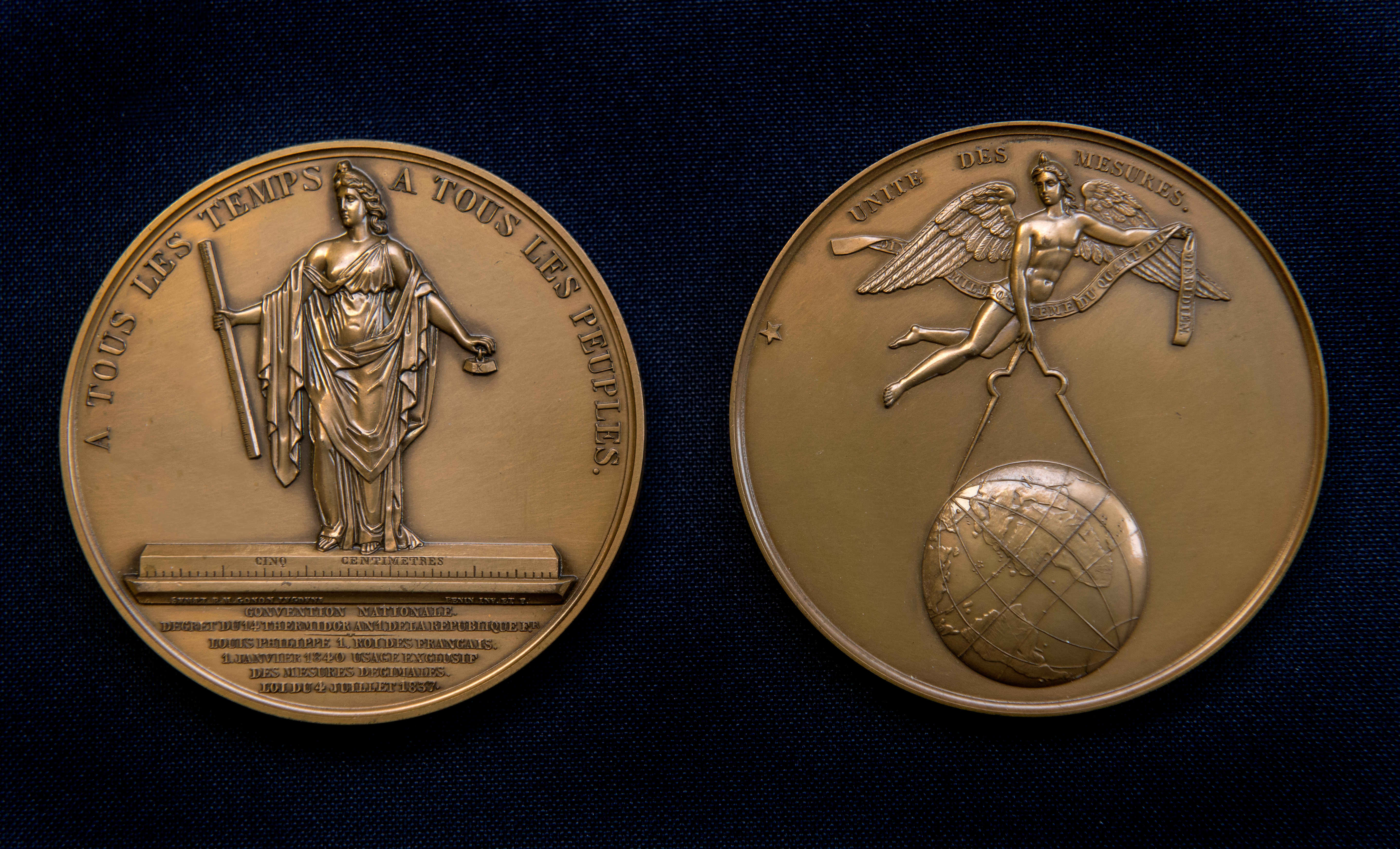Measuring the world - Keys to understanding
Event
Can science measure everything? This question will be the subject of this episode of "Keys to understanding", organized on the occasion of the 150th anniversary of the Metre Convention.
Informations pratiques
Location
Dome of the Institut de FranceDate
-
©Michel Hans/BIPM
Can science measure everything?
From the operation of our GPS units to radiotherapy and the management of air transport, having the most accurate and internationally shared measurements possible has become indispensable to our modern societies.
Time, distance, weight, heat, pressure, etc... Measurements are ubiquitous. But how have they been developed and disseminated over time? What instruments and devices have been devised to produce ever more accurate measurements? How far can we push this precision, and to what end?
On the occasion of the 150th anniversary of the Metre Convention, we take a look back with four specialists at the immense progress made in the precision and standardization of measurements, and explore the new challenges facing the measurement sciences today.
Background:
The Metre Convention, signed in 1875, marked an essential step in the unification of the international system of units. It was based on the need to standardize measurements in order to reduce errors due to the non-universality of units, thus facilitating trade and scientific progress. Louis XIV himself already expressed this need: "I don't even know what the surface of my kingdom is."
The Metre Convention follows on from the work of the French Revolution, for whom the system of units should be a universal system accessible to all, with the motto "À tous les Temps, à tous les Peuples".
The Académie des Sciences played a central role in this convention and the creation in 1875 of the Bureau International des Poids et Mesures (BIPM), one of the very first intergovernmental organizations. Today, the Metre Convention brings together 101 States and is a model of international cooperation on the dissemination and realization of units of measurement.
This episode of "Keys to understanding" will take place under the Coupole of the Institut de France on Thursday June 12, 2025 from 12:30 to 2:00 pm (doors open at 12:00). It will be hosted by Mathieu Rouault, journalist at Grand Labo.
With the participation of:
- Gérard Berry, member of the Académie des sciences, professor at the Collège de France.
- Sandrine Bony, member of the Académie des sciences, director of research at the CNRS.
- Céline Fellag, Head of Executive and Meetings Office, Bureau international des poids et mesures (BIPM).
- Jean-Marc Bordy, research engineer at CEA, winner of the LNE Research Award 2024.

....................................
⚠️ IMPORTANT INFORMATION - FILMED CONFERENCE ⚠️
We would like to inform you that this conference is being videotaped.
By entering the room, you agree that your image or voice may be recorded and used as part of the broadcast of this event.
If you wish to avoid appearing in the video, we invite you to:
Prefer seats at the back or sides of the room.
Inform a member of our team at the entrance if you have any questions or specific needs.
Caption and image credits:
1. This medal, dated 1840, is one of three meter medals recalling the universal ambition of the French Revolution: "to all times, to all peoples"
On the main side of the medal, the French Republic is symbolized by a woman surrounded by the inscription, holding a meter in her right hand and a kilogram in her left. She rests on a 5-centimeter-long plinth. The designers symbolically chose the revolutionary calendar, although the date of 14 Thermidor year 1 (August 1, 1793) predates the introduction of the revolutionary calendar.
On the reverse, a winged genie holds a compass in one hand and a banner in the other, inscribed DIX MILLIONIEME DU QUART DU MERIDIEN and on the left the Polaris star aligned with the axis of the poles.
©Michel Hans/BIPM
2. A metric standard meter in Place Vendôme, Paris. Inscription: This marble standard meter was commissioned by the French National Convention to encourage the use of the new metric system. Of the sixteen meters made between 1796 and 1799 by the marble-maker Corbel to the designs of the architect Chalgrin and placed in the busiest places in Paris, only two remain in the capital today.
©Chabe01 - CC BY-SA 4.0